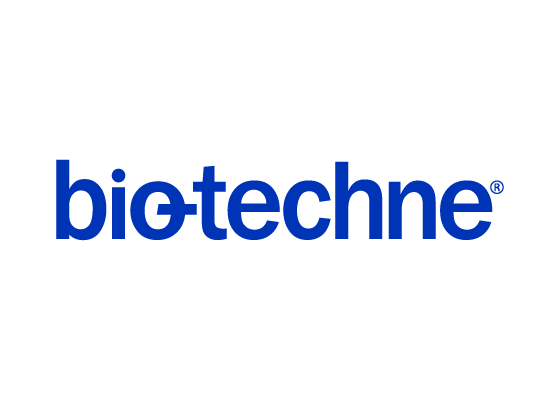Human Fc gamma RIIIB/CD16b Alexa Fluor® 405-conjugated Antibody
R&D Systems, part of Bio-Techne | Catalog # FAB1597V


Key Product Details
Species Reactivity
Applications
Label
Antibody Source
Product Specifications
Immunogen
Thr20-Gln208
Accession # O75015
Specificity
Clonality
Host
Isotype
Applications for Human Fc gamma RIIIB/CD16b Alexa Fluor® 405-conjugated Antibody
Flow Cytometry
Sample: Human peripheral blood granulocytes
Formulation, Preparation, and Storage
Formulation
Shipping
Stability & Storage
Background: Fc gamma RIIIB/CD16b
Receptors for the Fc region of IgG (Fc gamma R) are members of the Ig superfamily. Based on their genetic organization and molecular structure, three classes of human Fc gamma Rs: RI (CD64), RII (CD32), and RIII (CD16), which generate multiple isoforms, are recognized (1‑3). These receptors function in the activation or inhibition of immune responses. The activating-type receptor either has, or associates non-covalently with an accessory subunit (FcR gamma or zeta chain) that has an immunoreceptor tyrosine-based activation motif (ITAM) in its cytoplasmic domain. In contrast, the inhibitory receptor (Fc gamma RIIB) has a built-in immunoreceptor tyrosine-based inhibitory motif (ITIM) in its own cytoplasmic domain. Fc gamma RI is a high-affinity receptor that binds monomeric IgG. Both Fc gamma RII and RIII are low-affinity receptors that bind IgG in the form of immune complexes. Two genes for human Fc gamma RIII, A and B, encoding a transmembrane receptor and a glycosylphosphatidylinositol (GPI) anchored protein, respectively, have been identified. Three allelic variants of Fc gamma RIIIB, NA-1, NA-2, and SH, exist. A soluble form of Fc gamma RIIIB corresponding to the extracellular region of the receptor is produced by proteolytic cleavage and circulates in plasma and other body fluids. The extracellular domains of Fc gamma RIIIA and B share 97% amino acid sequence homology. Whereas Fc gamma RIIIA is expressed on most effector cells of the immune system including macrophage, monocyte, NK cells, mast cells, eosinophils, dendritic cells, and Langerhans cells, Fc gamma RIIIB is selectively expressed in neutrophils and eosinophils. Signaling through Fc gamma RIIIA results in oxidative burst, cytokine release and phagocytosis by macrophages, antibody-dependent cellular cytotoxicity by natural killer cells and degranulation of mast cells. By contrast, Fc gamma RIIIB is a decoy receptor that binds IgG complexes without triggering activation. Soluble Fc gamma RIIIB has a regulatory role in inflammatory processes (4). It interacts with complement receptors CR3 and CR4 on monocytes to induce the production of pro-inflammatory cytokines.
References
- van de Winkel, J. and P. Capes (1993) Immunol. Today 14:215.
- Ravetch, J.V. and S. Bolland (2001) Annu. Rev. Immunol. 19:275.
- Takai, T. (2002) Nature Rev. Immunol. 2:580.
- Gauchat, G.J. et al. (1996) J. Immunol. 157:1184.
Long Name
Alternate Names
Gene Symbol
UniProt
Additional Fc gamma RIIIB/CD16b Products
Product Documents for Human Fc gamma RIIIB/CD16b Alexa Fluor® 405-conjugated Antibody
Product Specific Notices for Human Fc gamma RIIIB/CD16b Alexa Fluor® 405-conjugated Antibody
This product is provided under an agreement between Life Technologies Corporation and R&D Systems, Inc, and the manufacture, use, sale or import of this product is subject to one or more US patents and corresponding non-US equivalents, owned by Life Technologies Corporation and its affiliates. The purchase of this product conveys to the buyer the non-transferable right to use the purchased amount of the product and components of the product only in research conducted by the buyer (whether the buyer is an academic or for-profit entity). The sale of this product is expressly conditioned on the buyer not using the product or its components (1) in manufacturing; (2) to provide a service, information, or data to an unaffiliated third party for payment; (3) for therapeutic, diagnostic or prophylactic purposes; (4) to resell, sell, or otherwise transfer this product or its components to any third party, or for any other commercial purpose. Life Technologies Corporation will not assert a claim against the buyer of the infringement of the above patents based on the manufacture, use or sale of a commercial product developed in research by the buyer in which this product or its components was employed, provided that neither this product nor any of its components was used in the manufacture of such product. For information on purchasing a license to this product for purposes other than research, contact Life Technologies Corporation, Cell Analysis Business Unit, Business Development, 29851 Willow Creek Road, Eugene, OR 97402, Tel: (541) 465-8300. Fax: (541) 335-0354.
For research use only